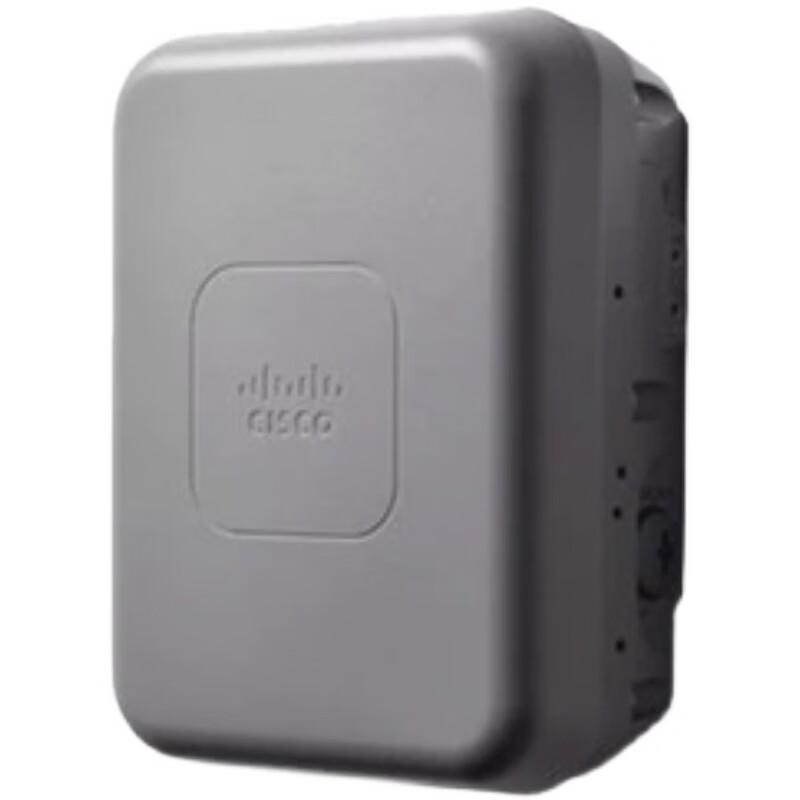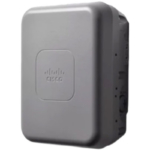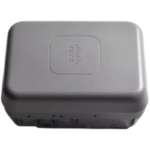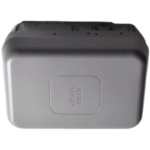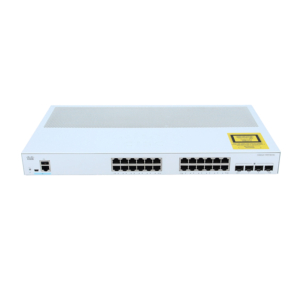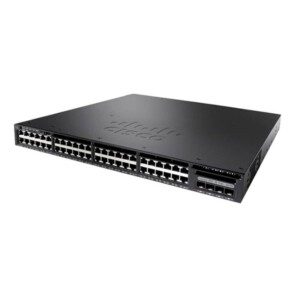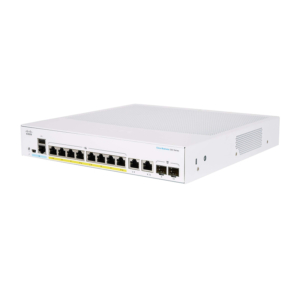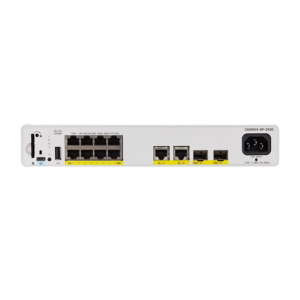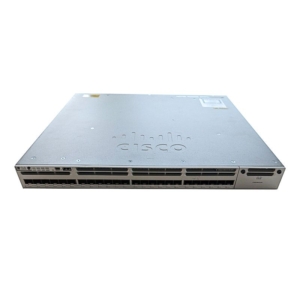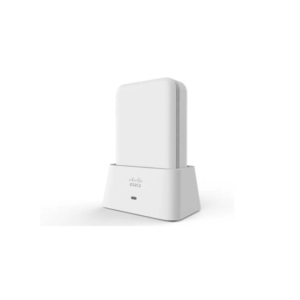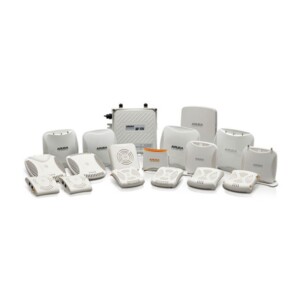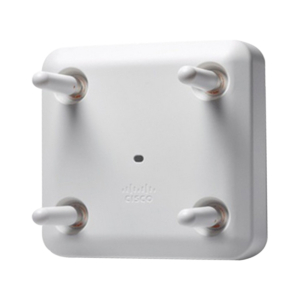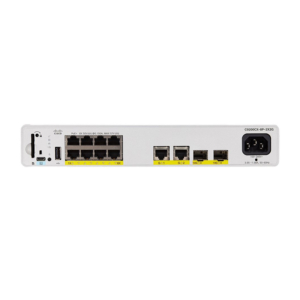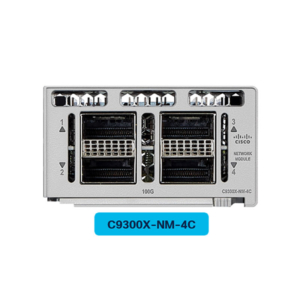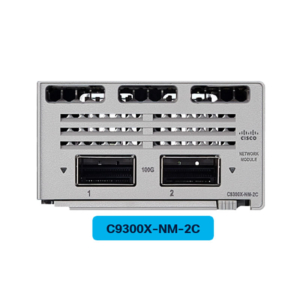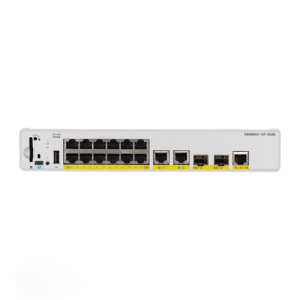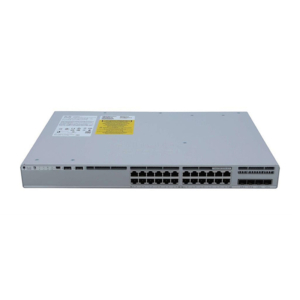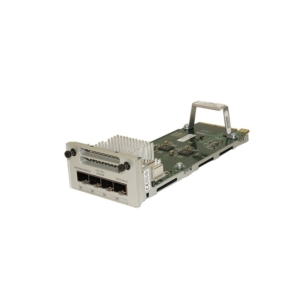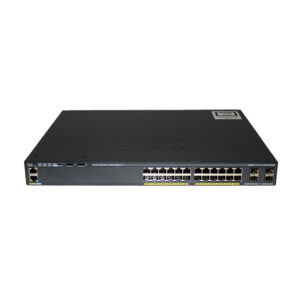Cisco Aironet®1560 Series Outdoor Access Points offer the latest 802.11ac Wave 2 Funktionen in einem robusten, low-profile housing that service providers and enterprises can deploy easily.
Ideal for applications requiring rugged outdoor Wi-Fi coverage, the Cisco Aironet 1560 Series Access Points offer the latest IEEE 802.11ac Wave 2 radio standard in a compact, ästhetisch ansprechend, einfach zu implementierendes Paket. Der 1560 Series offers flexible deployment options for service providers and enterprise networks, that need the fastest links possible for mobile, outdoor clients (Smartphones, Tablets, und Laptops) und drahtloser Backhaul. With options for internal or external antennas, Die 1560 Series Access Points give network operators the flexibility to balance their desired wireless coverage with their need for easy deployment. Das Cisco Aironet 1560 Series is built on the strong base of Cisco®wireless innovations such as:
●Cisco CleanAir®technology for spectrum intelligence
●Cisco ClientLink technology for beamforming
●Radio Resource Management (RRM) for dynamic transmitter channel and power control
Whether deployed as a traditional access point or wireless mesh access point, the Cisco Aironet 1560 Die Serie bietet die Durchsatzkapazität, die für die heutigen bandbreitenhungrigen Geräte erforderlich ist.
Cisco Aironet 1560 Datenblatt für Outdoor Access Points der Serie
Funktionen und Vorteile
Tisch 1 lists the features and benefits of the Cisco Aironet 1560 Serie.
Table 1.Features and Benefits of Cisco Aironet 1560 Serie
| Besonderheit | Nutzen |
| 802.11ac-Welle 2 Radio | Provides up to 1.3-Gbps data rates with 3 X 3 Multiple Input, Multiple Output (MIMO) and up to three spatial streams |
| Mehrbenutzer-MIMO (MU-MIMO) |
Ermöglicht die gleichzeitige Übertragung von Daten an mehrere 802.11ac Wave 2-fähige Clients, um das Kundenerlebnis zu verbessern; prior to 802.11ac Wave 2, Access Points könnten Daten jeweils nur an einen Client übertragen, Wird normalerweise als Einzelbenutzer-MIMO bezeichnet |
| Flexible Bereitstellungsmodi | Allows for deployment of the 1560 in a variety of ways including point -to-point and mesh networks; it can also be deployed with the Cisco Mobility Express Solution, which is ideal f or small to medium -sized deployments that supports multiple access points without a physical controller; all deployment modes are easy to set up and configure |
| Kleiner Formfaktor steckbar (SFP) Hafen | Supports optical fiber-based network connectivity for remote locations |
Prominent feature/differentiator/capability
Das Cisco Aironet 1560 Die Serie bietet die folgenden Funktionen:
●Improved performance for multiple client devices: The 802.11ac Wave 2 access points use MU-MIMO technology, which allows different data streams to all flow at once from the access point to multiple 802.11ac Wave 2-supported devices. Now, multiple 802.11ac Wave 2 devices can connect at the same time, getting the information they need quicker.
●5-GHz support: Das Cisco Aironet 1560 Series doubles the scale of 5 -GHz mobile devices and raises the performance of high-density environments.
●4G LTE Coexistence: Das Cisco Aironet 1560 Series includes robust filtering around the 2.4 GHz unlicensed band to block out nearby licensed 4G LTE cellular signals.
●Cisco Flexible Antenna Port technology uses software configurable for either single- or dual-band antennas. It allows you to use the same antenna ports for either dual-band antennas to reduce footprint or single-band antennas to optimize radio coverage.
●Cisco Mobility Express: This solution is designed to bring enterprise-class wireless access to small and medium-sized networks. Easy to set up with low maintenance, Mobility Express includes advanced features from Cisco and does not require a physical controller appliance.
●Cisco High Density Experience (HDX): Cisco HDX comes standard on the 1560, giving this access point top-of-the-line network efficiency over a large number of wireless clients. HDX uses customized chipsets to target the needs of high-density networks. It is built with best-in-class RF architecture and gives a better user experience for high-performance applications.
Produktspezifikationen
Tisch 2 listet die Spezifikationen auf 1560 Zugangspunkt.
Table 2.Specifications of Cisco Aironet 1560 Serie
| Artikel | Spezifikation | |||||||||||
| 802.11ac-Welle 1 Und 2 Fähigkeiten | ●1562I: 3 X 3 MIMO mit drei räumlichen Streams
●1562E/D 2 X 2 MIMO mit zwei räumlichen Streams ●Multi- and single-user MIMO ●Maximale Verhältniskombination (MRC) ●802.11ac-Beamforming (Beamforming übertragen) ●20-, 40-, und 80-MHz-Kanäle ●PHY-Datenraten bis zu 1.3 Gbit/s (80 MHz in 5 GHz) ●Paketaggregation: A-MPDU (Tx/Rx) und A-MSDU (Tx/Rx) 802.11 Dynamische Frequenzauswahl (DFS) ●Cyclic-Shift-Diversity (CSD) Unterstützung |
|||||||||||
| 802.11N (und verwandt) Fähigkeiten |
●1562I: 3 X 3 MIMO mit drei räumlichen Streams
●1562E/D: 2 X 2 MIMO mit zwei räumlichen Streams ●MRC ●20- und 40-MHz-Kanäle ●PHY-Datenraten bis zu 450 Mbit/s ●Paketaggregation: A-MPDU (Tx/Rx) und A-MSDU (Tx/Rx) ●802.11 DFS ●CSD-Unterstützung |
|||||||||||
| Unterstützte Datenraten | 802.11A: 6, 9, 12, 18, 24, 36, 48, Und 54 Mbit/s
802.11b/g: 1, 2, 5.5, 6, 9, 11, 12, 18, 24, 36, 48, Und 54 Mbit/s |
|||||||||||
| 802.11n Datenraten auf 2.4 Und 5 GHz: | ||||||||||||
| MCS-Index | GI4 = 800 ns | GI = 400 ns | ||||||||||
| 20-MHz-Tarife (Mbit/s) | 40-MHz-Tarife (Mbit/s) | 20-MHz-Tarife (Mbit/s) | 40-MHz-Tarife (Mbit/s) | |||||||||
| 0 | 6.5 | 13.5 | 7.2 | 15 | ||||||||
| 1 | 13 | 27 | 14.4 | 30 | ||||||||
| 2 | 19.5 | 40.5 | 21.7 | 45 | ||||||||
| 3 | 26 | 54 | 28.9 | 60 | ||||||||
| 4 | 39 | 81 | 43.3 | 90 | ||||||||
| 5 | 52 | 108 | 57.8 | 120 | ||||||||
| 6 | 58.5 | 121.5 | 65 | 135 | ||||||||
| 7 | 65 | 135 | 72.2 | 150 | ||||||||
| 8 | 13 | 27 | 14.4 | 30 | ||||||||
| 9 | 26 | 54 | 28.9 | 60 | ||||||||
| 10 | 39 | 81 | 43.3 | 90 | ||||||||
| 11 | 52 | 108 | 57.8 | 120 | ||||||||
| 12 | 78 | 162 | 86.7 | 180 | ||||||||
| 13 | 104 | 216 | 115.6 | 240 | ||||||||
| 14 | 117 | 243 | 130 | 270 | ||||||||
| 15 | 130 | 270 | 144.4 | 300 | ||||||||
| 16 | 19.5 | 40.5 | 21.7 | 45 | ||||||||
| 17 | 39 | 81 | 43.3 | 90 | ||||||||
| 18 | 58.5 | 121.5 | 65 | 135 | ||||||||
| 19 | 78 | 162 | 86.7 | 180 | ||||||||
| 20 | 117 | 243 | 130 | 270 | ||||||||
| 21 | 156 | 324 | 173.3 | 360 | ||||||||
| 22 | 175.5 | 364.5 | 195 | 405 | ||||||||
| 23 | 195 | 405 | 216.7 | 450 | ||||||||
| 802.11ac Data Rates (5 GHz) | ||||||||||||
| Räumliche Ströme | MCS | GI = 800 ns | GI = 400 ns | |||||||||
| 20 MHz | 40 MHz | 80 MHz | 20 MHz | 40 MHz | 80 MHz | |||||||
| 1 | 0 | 6.5 | 13.5 | 29.3 | 7.2 | 15 | 32.5 | |||||
| 1 | 1 | 13 | 27 | 58.5 | 14.4 | 30 | 65 | |||||
| 1 | 2 | 19.5 | 40.5 | 87.8 | 21.7 | 45 | 97.5 | |||||
| 1 | 3 | 26 | 54 | 117 | 28.9 | 60 | 130 | |||||
| 1 | 4 | 39 | 81 | 175.5 | 43.3 | 90 | 195 | |||||
| 1 | 5 | 52 | 108 | 234 | 57.8 | 120 | 260 | |||||
| 1 | 6 | 58.5 | 121.5 | 263.3 | 65 | 135 | 292.5 | |||||
| 1 | 7 | 65 | 135 | 292.5 | 72.2 | 150 | 325 | |||||
| 1 | 8 | 78 | 162 | 351 | 86.7 | 180 | 390 | |||||
| 1 | 9 | – | 180 | 390 | – | 200 | 433.3 | |||||
| 2 | 0 | 13 | 27 | 58.5 | 14.4 | 30 | 65 | |||||
| 2 | 1 | 26 | 54 | 117 | 28.9 | 60 | 130 | |||||
| 2 | 2 | 39 | 81 | 175.5 | 43.3 | 90 | 195 | |||||
| 2 | 3 | 52 | 108 | 234 | 57.8 | 120 | 260 | |||||
| 2 | 4 | 78 | 162 | 351 | 86.7 | 180 | 390 | |||||
| 2 | 5 | 104 | 216 | 468 | 115.6 | 240 | 520 | |||||
| 2 | 6 | 117 | 243 | 526.5 | 130 | 270 | 585 | |||||
| 2 | 7 | 130 | 270 | 585 | 144.4 | 300 | 650 | |||||
| 2 | 8 | 156 | 324 | 702 | 173.3 | 360 | 780 | |||||
| 2 | 9 | – | 360 | 780 | – | 400 | 866.7 | |||||
| 3 | 0 | 19.5 | 40.5 | 87.8 | 21.7 | 45 | 97.5 | |||||
| 3 | 1 | 39 | 81 | 175.5 | 43.3 | 90 | 195 | |||||
| 3 | 2 | 58.5 | 121.5 | 263.3 | 65 | 135 | 292.5 | |||||
| 3 | 3 | 78 | 162 | 351 | 86.7 | 180 | 390 | |||||
| 3 | 4 | 117 | 243 | 526.5 | 130 | 270 | 585 | |||||
| 3 | 5 | 156 | 324 | 702 | 173.3 | 360 | 780 | |||||
| 3 | 6 | 175.5 | 364.5 | – | 195 | 405 | – | |||||
| 3 | 7 | 195 | 405 | 877.5 | 216.7 | 450 | 975 | |||||
| 3 | 8 | 234 | 486 | 1053 | 260 | 540 | 1170 | |||||
| 3 | 9 | 260 | 540 | 1170 | 288.9 | 600 | 1300 | |||||
| Frequenzband und 20- MHz-Betriebskanäle (Regulierungsbereiche) | A:
2.412 Zu 2.462 GHz, 11 Kanäle 5.280 Zu 5.320 GHz, 3 Kanäle 5.500 Zu 5.580 GHz, 5 Kanäle 5.660 Zu 5.700 GHz, 3 Kanäle 5.745 Zu 5.825 GHz, 5 Kanäle B: 2.412 Zu 2.462 GHz, 11 Kanäle 5.180 Zu 5.240 GHz, 4 Kanäle 5.260 Zu 5.320 GHz, 4 Kanäle 5.500 Zu 5.720 GHz, 12 Kanäle 5.745 Zu 5.825 GHz, 5 Kanäle C: 2.412 Zu 2.472 GHz, 13 Kanäle 5.745 Zu 5.825 GHz, 5 Kanäle D: 2.412 Zu 2.462 GHz, 11 Kanäle 5.745 Zu 5.865 GHz, 7 Kanäle E: 2.412 Zu 2.472 GHz, 13 Kanäle 5.500 Zu 5.580 GHz, 5 Kanäle 5.660 Zu 5.700 GHz, 3 Kanäle F: 2.412 Zu 2.472 GHz, 13 Kanäle 5.745 Zu 5.805 GHz, 4 Kanäle G: 2.412 Zu 2.472 GHz, 13 Kanäle 5.745 Zu 5.825 GHz, 5 Kanäle -H: 2.412 Zu 2.472 GHz, 13 Kanäle 5.745 Zu 5.825 GHz, 5 Kanäle -ICH: 2.412 Zu 2.472 GHz, 13Kanäle 5.180 Zu 5.320 GHz, 8Kanäle (Supported countries – *Ägypten) -K: 2.412 Zu 2.462 GHz, 11 Kanäle 5.280 Zu 5.320 GHz, 3 Kanäle 5.500 Zu 5.620 GHz, 7 Kanäle 5.745 Zu 5.805 GHz, 4 Kanäle -L: 2.412 Zu 2.472 GHz, 13 Kanäle 5.500 Zu 5.620 GHz, 7 Kanäle 5.745 Zu 5.865 GHz, 7 Kanäle -M: 2.412 Zu 2.472 GHz, 13 Kanäle 5.500 Zu 5.580 GHz, 5 Kanäle 5.660 Zu 5.700 GHz, 3 Kanäle 5.745 Zu 5.805 GHz, 4 Kanäle -N: 2.412 Zu 2.462 GHz, 11 Kanäle 5.745 Zu 5.825 GHz, 5 Kanäle -Q: 2.412 Zu 2.472 GHz, 13 Kanäle 5.500 Zu 5.700 GHz, 11 Kanäle -R: 2.412 Zu 2.472 GHz, 13 Kanäle 5.260 Zu 5.320 GHz, 4 Kanäle 5.660 Zu 5.700 GHz, 3 Kanäle 5.745 Zu 5.825 GHz, 5 Kanäle -S: 2.412 Zu 2.472 GHz, 13 Kanäle 5.500 Zu 5.700 GHz, 11 Kanäle 5.745 Zu 5.825 GHz, 5 Kanäle -T: 2.412 Zu 2.462 GHz, 11 Kanäle 5.500 Zu 5.580 GHz, 5 Kanäle 5.660 Zu 5.700 GHz, 3 Kanäle 5.745 Zu 5.825 GHz, 5 Kanäle -Z: 2.412 Zu 2.462 GHz, 11 Kanäle 5.500 Zu 5.580 GHz, 5 Kanäle 5.660 Zu 5.700 GHz, 3 Kanäle 5.745 Zu 5.825 GHz, 5 Kanäle |
|||||||||||
 Anbieter von IT-Netzwerkausrüstung
Anbieter von IT-Netzwerkausrüstung

